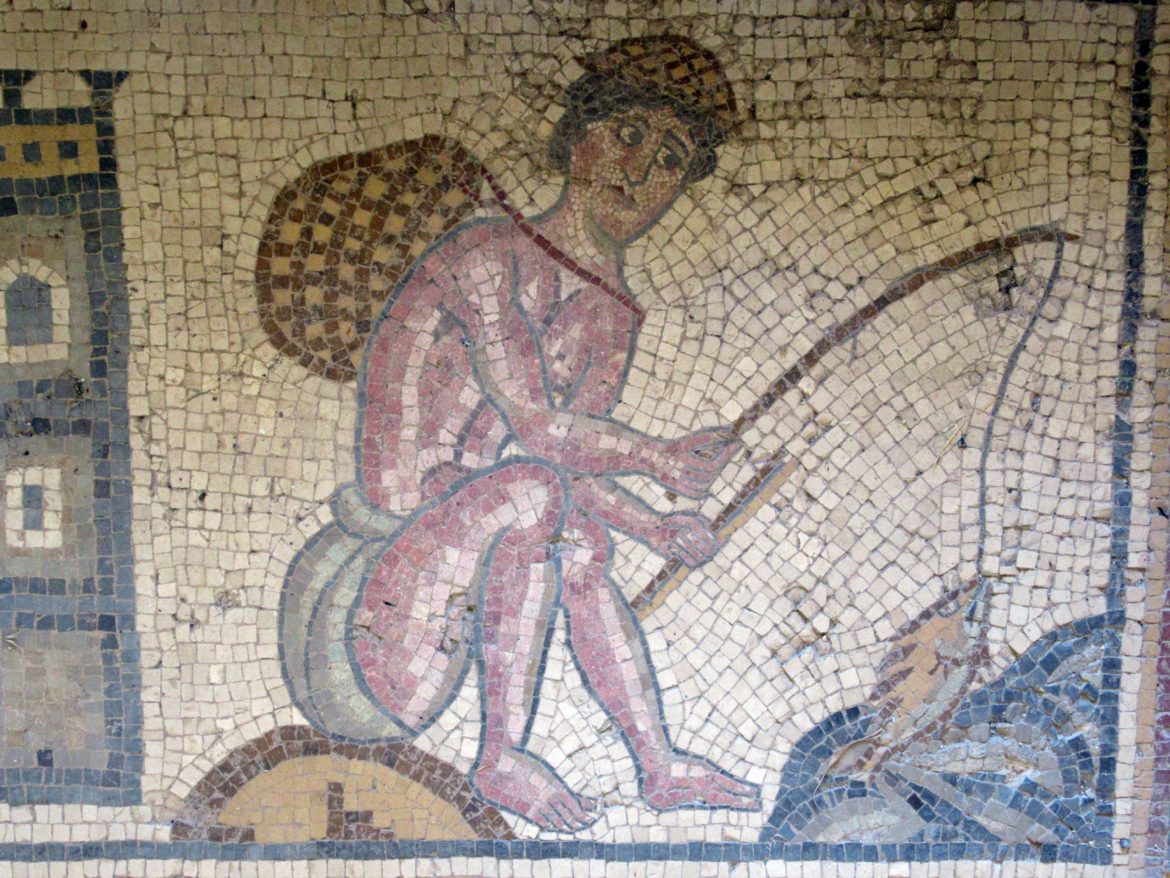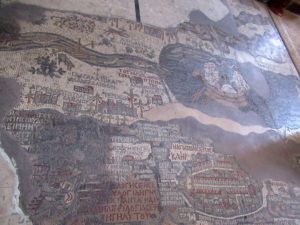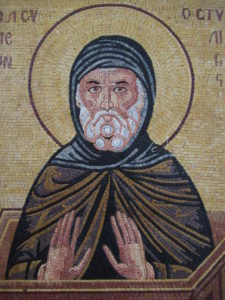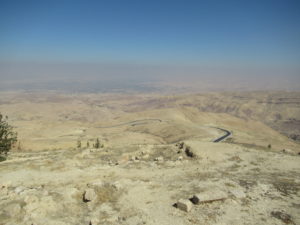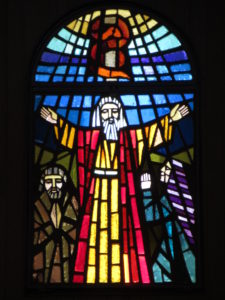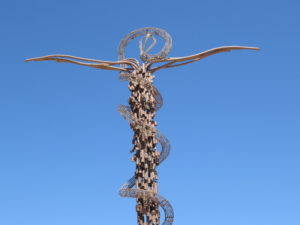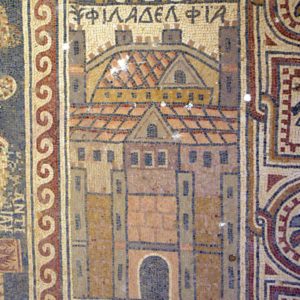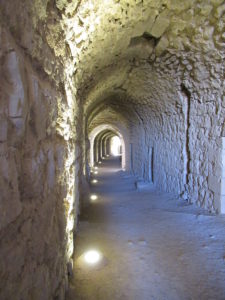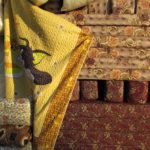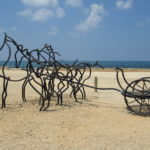After getting acclimated to a new time zone (and Jordan’s summer heat) we headed south from Amman to Petra, to visit one of the most amazing destinations on Earth.
We could have traveled to Petra by zipping down Jordan’s modern Desert Highway, which gets you there from Amman in just a few hours. Instead we took the slower, scenic route, which takes a whole day. It’s called the King’s Highway. The name reflects events involving kings, both historic and Biblical, that occurred at various points along the route. Truth vs. myth can be hard to sort out when it comes to ancient civilizations. But the places we visited were definitely real.
Our first stop was Madaba, an important town in Roman and Byzantine times. Its main claim to fame nowadays is a mosaic map of the ancient world that is embedded in the floor of St. George’s Church. The map, which dates to the 6th Century AD, originally contained about 2 million pieces of colored stone. It locates and depicts, with great accuracy for the era, many significant landmarks, including the Dead Sea, Jerusalem, Bethlehem, and Mount Sinai. The map has suffered the consequences of time and neglect, but it’s still an impressive sight.
Having become a popular tourist stop, St. George’s now also features a lot of much newer tile work.
Next up on our King’s Highway tour was a visit to Mt. Nebo. This is the hill where, according to the Bible, God showed Moses a view of the Promised Land. This is more or less what Moses would have seen:
Moses: “Uh, hey God? That promised land you’ve been talking about looks kind of dry and rocky. Any chance your chosen peeps can get an upgrade to somewhere a little more green and fertile?”
God: “Shut up, Moses. I know what I’m doing. I’m God, after all. Besides, what do you care? You won’t make it to the Promised Land anyway. You’re going to die right here on this hill.”
Moses: “Oy gevalt! This is the thanks I get after slaving for you, literally? You’re worse than a Jewish mother!”
God: “I AM a Jewish mother, Moses.”
After Mt. Nebo, we paid a visit to Umm ar-Rasas. It’s a UNESCO World Heritage Site that features ruins from Roman and Byzantine times. The centerpiece is the 8th Century Church of St. Stephen, where you can find some of the most sprawling and impressive mosaics in the entire region. Among the details are many panels depicting important Christian cities of the era. If you know your Greek alphabet, you can see that this one spells Philadelphia (the ancient name for this city):
Our last stop before arriving at Petra was a visit to Karak Castle. The castle was originally constructed in 850 BC by Mesha, King of the Moabites. Its ruins later formed the foundation of another castle built by the King of Jerusalem in the 12th Century AD. Within a few decades, the castle was undergoing one siege after another, with its ownership changing from Christian to Muslim and back again more than once. You will not be shocked to learn that many people died senselessly during these battles over a bunch of stones. Just look at those stones now. Not much worth dying for, that’s for sure.
Some of those dead people’s remains are probably interred in the floors and walls of the many interior passages you can wander.
Some of the dust graffiti dates back to the 12th Century too. That’s how long it’s been since it rained at the castle.
No, not really. But as you wander around in Jordan’s dry, dusty climate, you could almost believe it. At any rate, you’re going to end up with plenty of that ancient dust on your clothing and shoes. Just like those old kings surely did.
